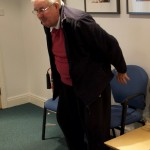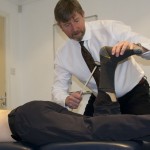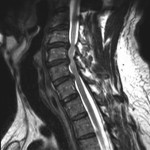FAQs About Chiropractic
Chiropractic has been a registered profession since 1999 and has a governmental body governing standards of practice, it is a legal requirement for all practising chiropractors to register with the General Chiropractic Council. Below we offer answers to some of the questions that we are asked regularly.
What is Chiropractic?
Chiropractic is known for its treatment using manipulation, the word itself means ‘done by hand’, however to define Chiropractic simply by the uniqueness of its treatment and then assume that treatment using manipulation is all that you get is to miss the point entirely.
At The Spine Team we use the ‘Patient Centred Model’ where the patient’s life is considered as well as their symptoms, most symptom patterns we treat do not result from significant injury but from a failure to cope at a particular time. Understanding why and helping patients recover and reduce the likelihood of reoccurrence is very important in such conditions.
Chiropractic is one of the alternative medicines which use a different model to orthodox medicine to understand what is wrong. It uses science in the same way that orthodox medicine does but focuses on how each different person’s body reacts to create a symptom pattern rather than the symptom pattern being caused by a disorder that is the same in all people.
The ‘symptom means a thing’ model originated in orthodox medicine with the ‘Germ Model’ where identification of a particular bug, a bacteria for example, lead to an understanding, and ultimately, a treatment for that bug. This has of course had a huge beneficial effect in treatment of many life threatening conditions.
The current alternative model arose in the late 19th Century and early 20th Century as a response to this objective ‘Germ Model’ being applied to all conditions which was not what the public wanted. The alternative model gave people a choice of managing conditions without drugs or surgery because of which it became unpopular with the medical establishment and ultimately alienated.
Since the 1970’s there has been an increasing amount of research to show that the alternative model has great validity, particularly in chronic or recurrent conditions. It requires the practitioner to work with the patient to improve health and well being as well as a rationale for treatment.
There is of course much cross over at the margins between these two approaches but there is a clear distinction in approach. The alternative model is widely practiced these days in the orthodox medical system.
What is the difference between Chiropractic and Osteopathy?
Both professions originated at about the same time in the 1890’s, both use manipulation as a treatment technique, both are governed by acts of Parliament with registration a legal requirement and standards of practice controlled.
Historically the philosophical points of view were different with chiropractic looking to the nerves for an explanation of disease and osteopathy the circulation of blood, their respective rationales were based on treating the body to optimise the ‘flow’ through the respective system.
These days with so much more available research to both professions the modes of practice are much less distinct and indeed although you could suggest that the techniques are still different there is enough variation within each profession that to a patient the profession of their practitioner may not be the defining criteria on outcome.
So who should you see?
The practice with the best reputation for the type of condition and approach you think will suit you. Ask questions about what you can expect and use the practice that gives you the best answers. If you have had some treatment and are not happy try another practitioner, we are not all the same and some approaches are going to suit you better than others.
What Is Back Pain?
Most back pain, between 97% and 98%, is not serious, however it can be very painful and very frightening if you do not know what is going on!
For many years back pain was regarded as a straightforward ‘injury’ that occurred at the onset of the pain, it was then assumed that this ‘injury’ should ‘heal’ and if treatment is necessary then it should ‘cure’ the problem for good. Once the MRI scans became available, in about 1987, it was assumed that they would show this ‘injury’.
However studies using MRI scans on the differences on people with back pain those without, and on subjects before, during and after episodes of pain, to show that this was not the case. Indeed for between 85% and 90% of cases of low back pain there is no evidence any ‘injury’ or indeed any explanation for the pain at all.
Most of the workings of the spine, the mechanical part, is on the outside of the spine, this includes the joints that sense and co-ordinate movement, these are known as the ‘Facet Joints’. Research has shown that these are important in sensing position and load and have the capacity to recruit muscular support to help regulate movement and support load. It has been suggested that it is the failure of this system that causes most back pain, so called ‘Mechanical Back Pain’.
If nothing is broken why does back pain hurt so much?
For anyone who has had back pain being told that there is no evidence of damage is of little consolation, they need an explanation for their pain experience. Research has shown that in a male adult the compressive force that the lower back muscles can generate could be as much as 6000N; Newtons (N) are a unit of force, one kilogram (kg) requires approximately 10N to hold up against gravity. What that actually means is that the muscles of the back can create a compressive force equivalent to carrying 600kg.
The model we use at The Spine Team for an acute episode of back pain suggests that some, or potentially all, of this available force is exerted in an effort to stabilise the spine at the onset of pain. It is quite likely that the episode was caused by an incident, but that incident is very often trivial, we also know that no damage is seen on scans so it is the sudden compressive spasm that causes the pain. Just imagine placing such a load (half the weight of a small car) on your foot!
Let’s say that an average man weighs 80kg and half of that, 40kg, is supported by the base of the spine. The muscles around the mechanics of the spine are on average about 5cm behind the centre of bending movement in the disc (the fulcrum). When  you bend forward to lift 10kg of shopping out of the boot of the car the distance from the fulcrum (at the centre of the disc) to the furthest point of the shopping could be 90cm. If the shopping and the body weight are combined and evenly spread over the 90cm then the load is 50kg at an average lever of 45cm. Thus a leverage ratio of 45:5 or 9:1 is the result. Therefore a compressive force at the 5cm lever equivalent to 450kg (50 x 9) is required to hold the shopping and the body weight against gravity (4500N).
you bend forward to lift 10kg of shopping out of the boot of the car the distance from the fulcrum (at the centre of the disc) to the furthest point of the shopping could be 90cm. If the shopping and the body weight are combined and evenly spread over the 90cm then the load is 50kg at an average lever of 45cm. Thus a leverage ratio of 45:5 or 9:1 is the result. Therefore a compressive force at the 5cm lever equivalent to 450kg (50 x 9) is required to hold the shopping and the body weight against gravity (4500N).
It is reasonable to assume that normally this force is recruited only when needed but if it suddenly starts in a misguided effort to stabilise the pain is extraordinary, and for most relief of counterbalancing by bending forward is the only relief.
Could my back pain be serious?
 A small percentage of back pain can be serious and there are usually clear signs that something is wrong, signs which an experienced practitioner should pick up during your consultation.
A small percentage of back pain can be serious and there are usually clear signs that something is wrong, signs which an experienced practitioner should pick up during your consultation.
The more common of these, about 2% of back pain, is due to damage inside the spine, such as disc prolapse or herniation (not to be confused with disc bulging due to wear and tear, such as seen in spondylosis which is part of the raging process and not associated with pain) and we have clinical tests to identify these conditions, if we are concerned we can arrange privately or refer back to your GP for imaging, usually MRI scans.
 Less than 1% of back pain is due to serious spinal pathology and this is usually suspected if there are abnormal signs in the way your nerves test, you have a history of something that could affect the spine or you are unwell in another way. Usually in such cases we will refer back to your GP for blood tests and imaging, on the odd occasion we will do this as an emergency but more commonly this is done with a view to a referral from the GP to a specialist under the ‘two week rule’. There are occasions where the referral is not an emergency, for example where the spinal cord is obstructed by wear and tear, and the changes are likely to be very gradual.
Less than 1% of back pain is due to serious spinal pathology and this is usually suspected if there are abnormal signs in the way your nerves test, you have a history of something that could affect the spine or you are unwell in another way. Usually in such cases we will refer back to your GP for blood tests and imaging, on the odd occasion we will do this as an emergency but more commonly this is done with a view to a referral from the GP to a specialist under the ‘two week rule’. There are occasions where the referral is not an emergency, for example where the spinal cord is obstructed by wear and tear, and the changes are likely to be very gradual.
One of the main advantages of coming to The Spine Team is our practitioners are very experienced, Gordon and Annette have respectively 33 and 20 years experience. We ensure that any concerns that arise during your consultation are followed up but we are dependent on you giving a complete history, whether it seems relevant to you or not, of course it will always be totally confidential and concerns are communicated to your GP only after they has been explained to you and you have given permission for release of that information.
